Welcome to the Jungle – Mata Atlântica!
Nope, I didn’t get lost. After a long season in Antarctica, it was just time for a change—a completely different ecosystem: the Atlantic Forest, or Mata Atlântica in Portuguese.
This lush, tropical and subtropical forest stretches along Brazil’s Atlantic coast, from Rio Grande do Norte in the northeast to Rio Grande do Sul in the south—covering about 92% of the forest’s total area. It also pushes inland, with 6% in Paraguay and 2% in northeastern Argentina. Unlike the Amazon, which it’s often overshadowed by, the Atlantic Forest is separated by vast savannas (Cerrado) and drylands (Sertão).
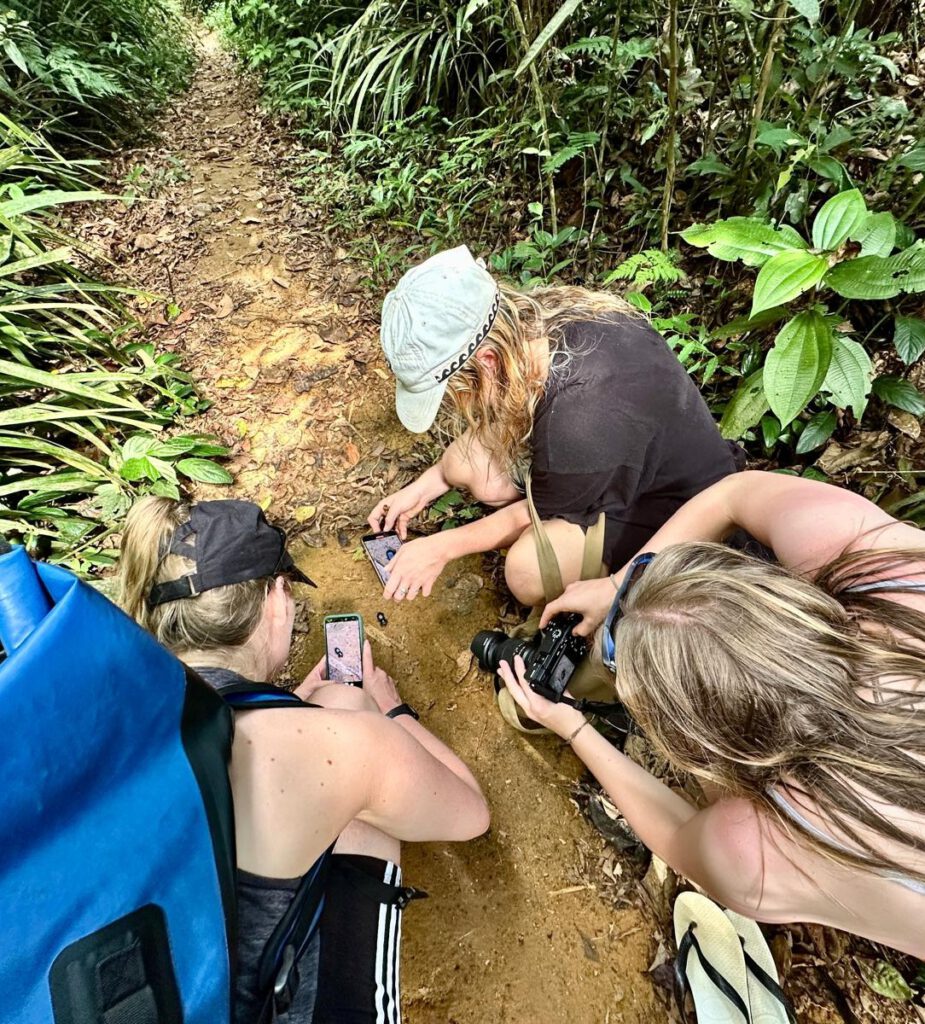
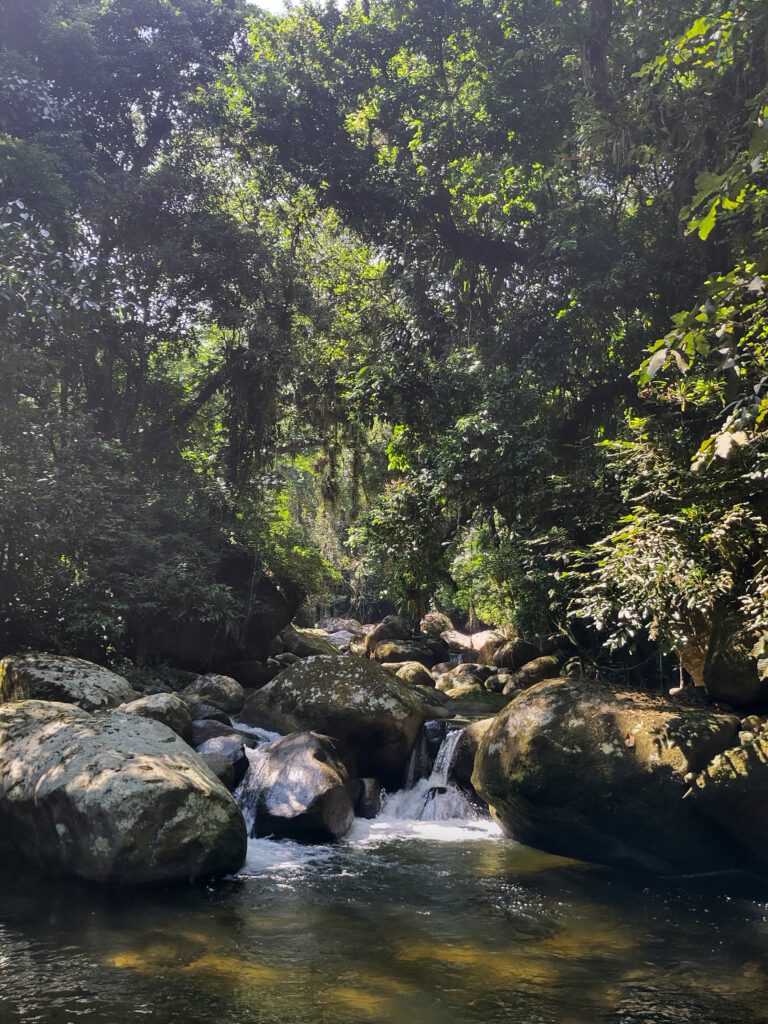
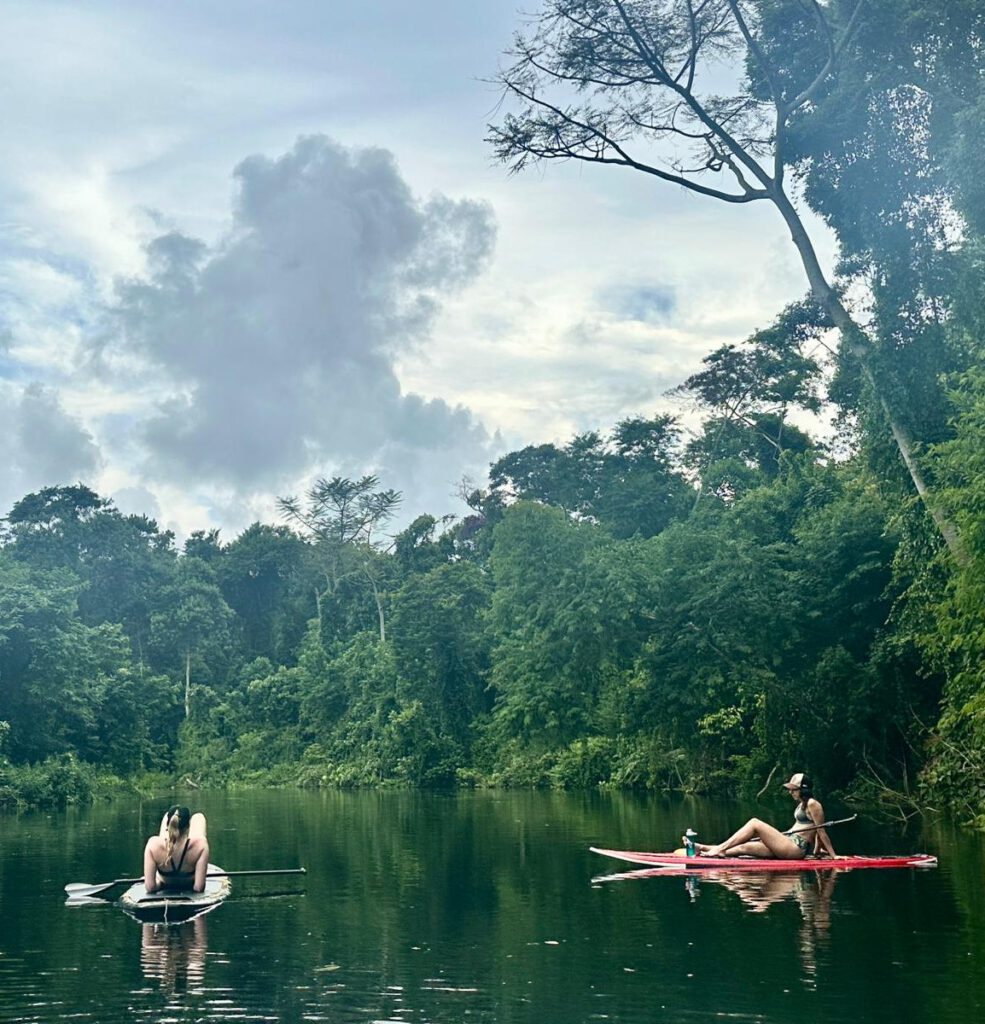
In 1993, this biodiversity hotspot was declared a UNESCO Biosphere Reserve. But despite the title, the forest is under constant threat. Over 85% of its original area has already been deforested—mostly for agriculture and cattle grazing—and the pressure hasn’t let up.
Still, the forest holds on. Jaguars, ocelots, and brown-throated sloths are just a few of the iconic species that call it home. And there’s more: new species are still being discovered here. The ones we met may not have been famous or flashy, but they were just as wild and worthy.
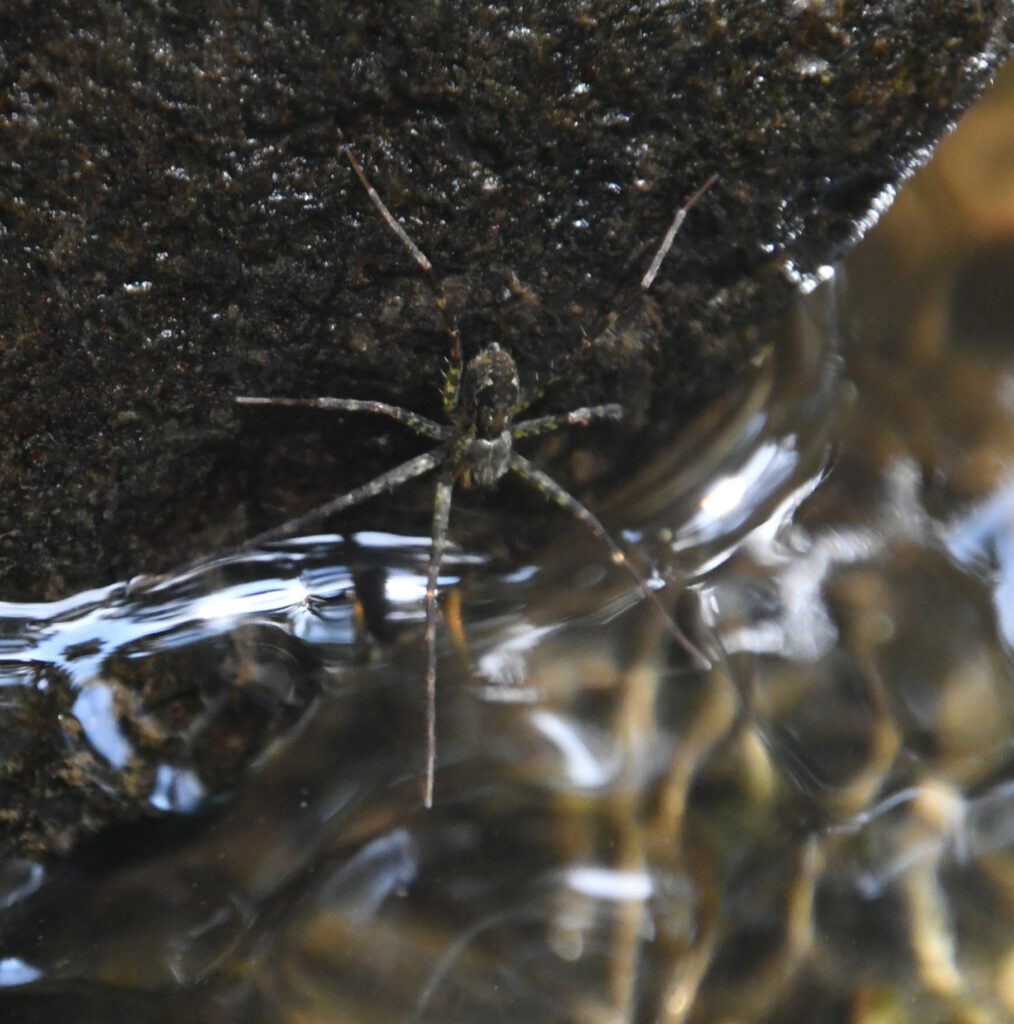
Let’s start with the most intimidating one: the mighty armadeira, also known as the Brazilian wandering spider.
Its genus name, Phoneutria, comes from the Greek word for “murderess” — charming, right? These spiders can reach up to 18 cm in leg span and are known for roaming the jungle floor at night.
What makes them potentially dangerous isn’t just their potent venom, but the fact that they sometimes turn up close to where people live. While bites are rare and not usually fatal thanks to medical treatment, they’re definitely a spider you wouldn’t want to surprise.
Meet the Giant Metallic Ceiba Borer (Euchroma giganteum) — also known as the Metallic Wood-Boring Beetle.
At 5 to 8 cm long, it’s one of the largest members of the Buprestidae family, known for their glossy, iridescent colors that shimmer in the light.
Male beetles are thought to attract females with a clicking sound made by their elytra – the hardened forewings that protect the delicate wings underneath.
The larvae feed on decaying wood, playing an important role in forest ecosystems, while the adults are usually spotted strolling along tree trunks, especially Ceiba trees.
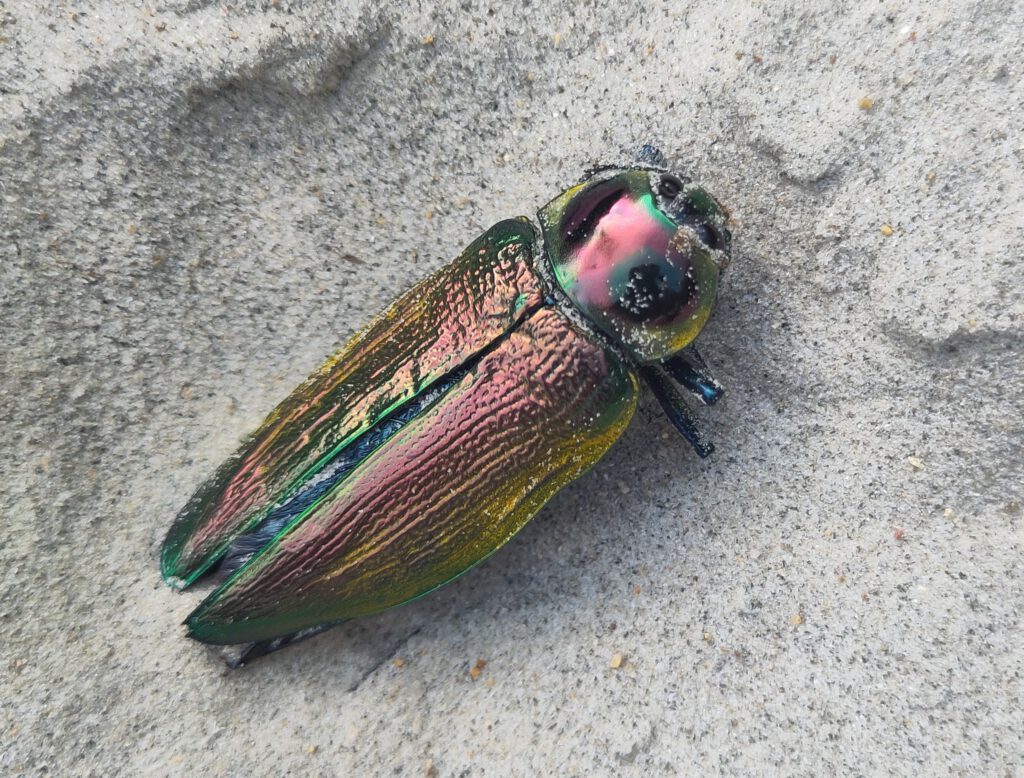
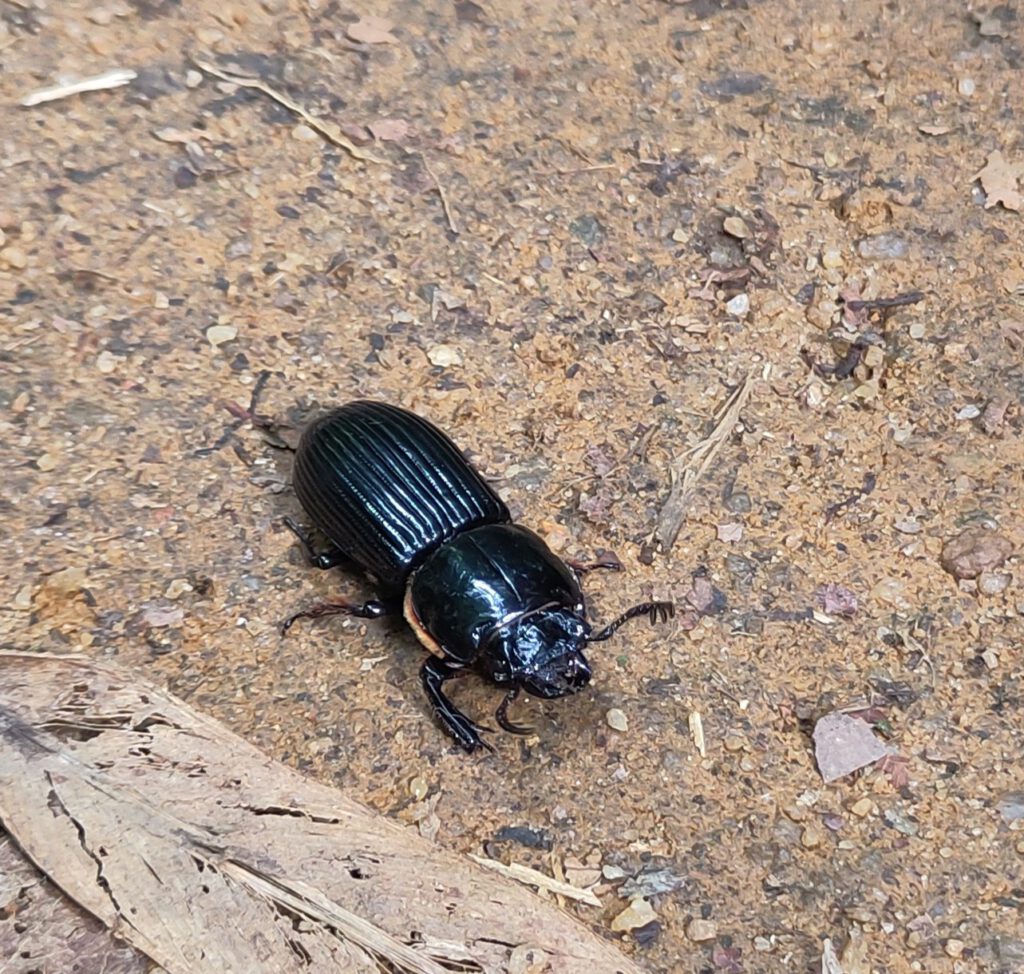
Patent-leather beetles (Odontotaenius disjunctus) are saproxylic (i. e. wood-eating) and – believe it or not – are capable of pulling 50 times their own weight.
They inhabit climates with high humidity on both hemispheres. Many of them may live together in a colony, and several colonies can co-exist in the same log.
By rubbing their wings on the abdomen, adults can produce a squeaking sound when they feel disturbed. This is called stridulation, and is often easy to hear.
Habitat loss due to deforestation for agriculture is the biggest threat to this species.
Meet Homalinotus coriaceus, a name that sounds almost elegant for a beetle that’s anything but welcome. Locals call it the Black coconut bunch weevil, and if you’re growing coconuts in Brazil, it’s probably on your most-wanted list—for all the wrong reasons.
This little beetle has made a big impact. In some areas, it’s slashed coconut production by up to 50%. The females lay their eggs right on the floral stalks of the tree. Once they hatch, the larvae burrow deep into the peduncles, feeding on sap as they go. It doesn’t stop there. The adults show up too, chewing into flowers and young fruits, leaving behind damaged crops and frustrated farmers.
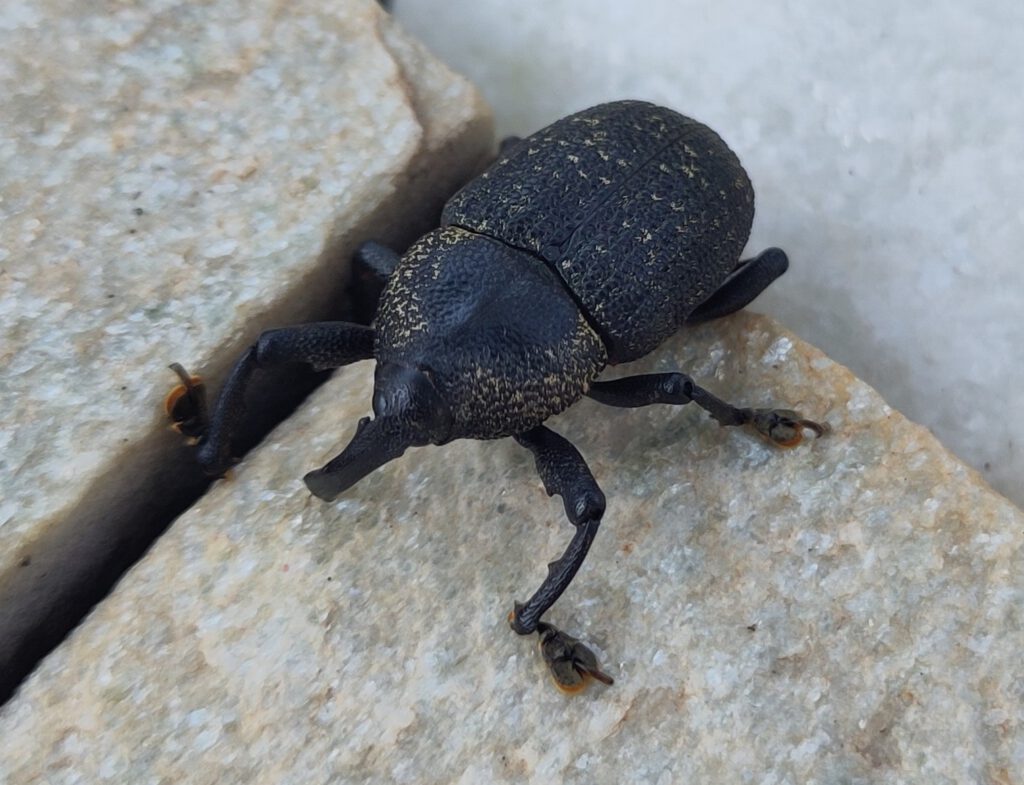
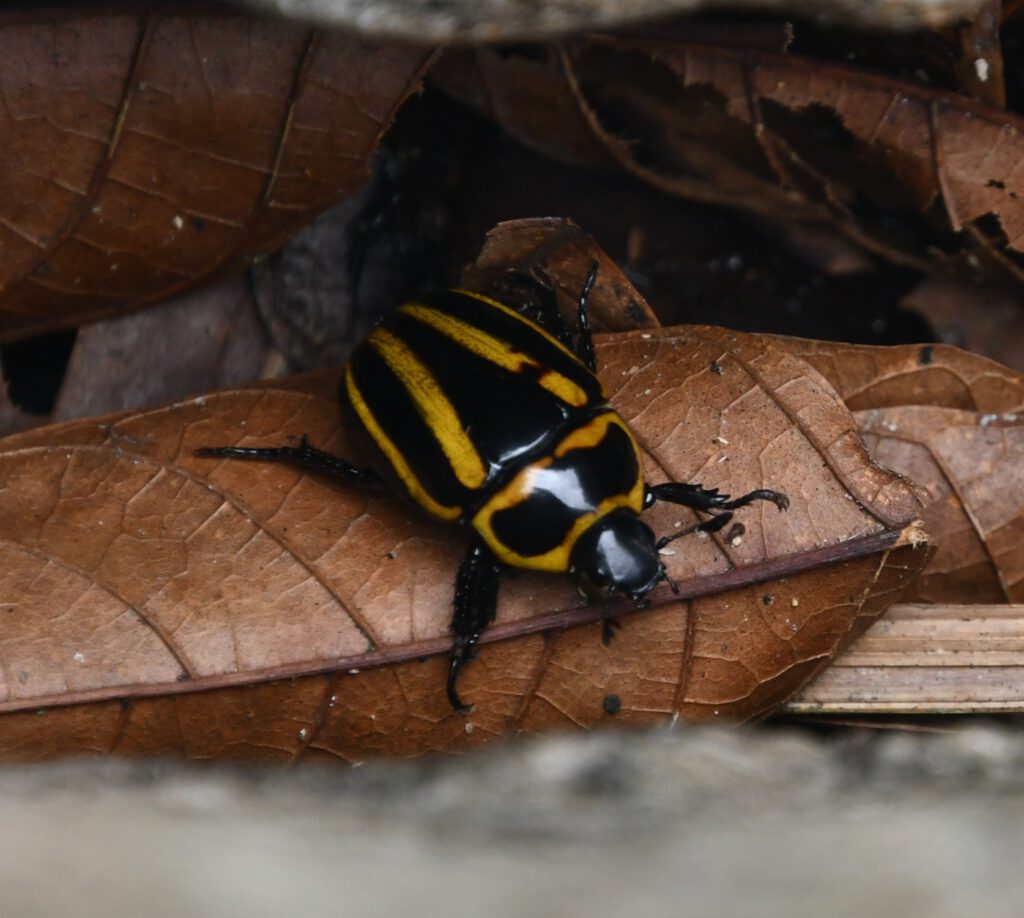
This striking beetle is Macraspis cincta — and truth be told, not much is known about it.
It belongs to the Scarabaeidae family, which includes over 35,000 species commonly known as scarabs or scarab beetles.
Many scarabs are nature’s cleanup crew, feeding on dung, carrion, or decaying plant matter. Others are less helpful — as plant-eaters, they can cause serious damage to crops and vegetation.
Some members of this family, including M. cincta, have structurally colored shells that reflect light in remarkable ways. In fact, scarab beetles were the first known example of circular polarization in nature — their shells act as left-handed circular polarizers. Pretty impressive for such a small creature.
This is Appias drusilla, better known as the Florida white or tropical white.
These butterflies drift from Brazil all the way up to southern Florida and the Keys, gliding through lowland forests that stay green year-round or drop their leaves just for a season.
Males are clean and simple, pure white with just a thin black edge along the forewing. But the females play it differently. In the dry season (October to April), they keep it understated—plain white like the males. Come the wet season (May to September), though, they turn up the volume, flashing black-edged wings and a splash of yellow-orange on the upper hindwing.
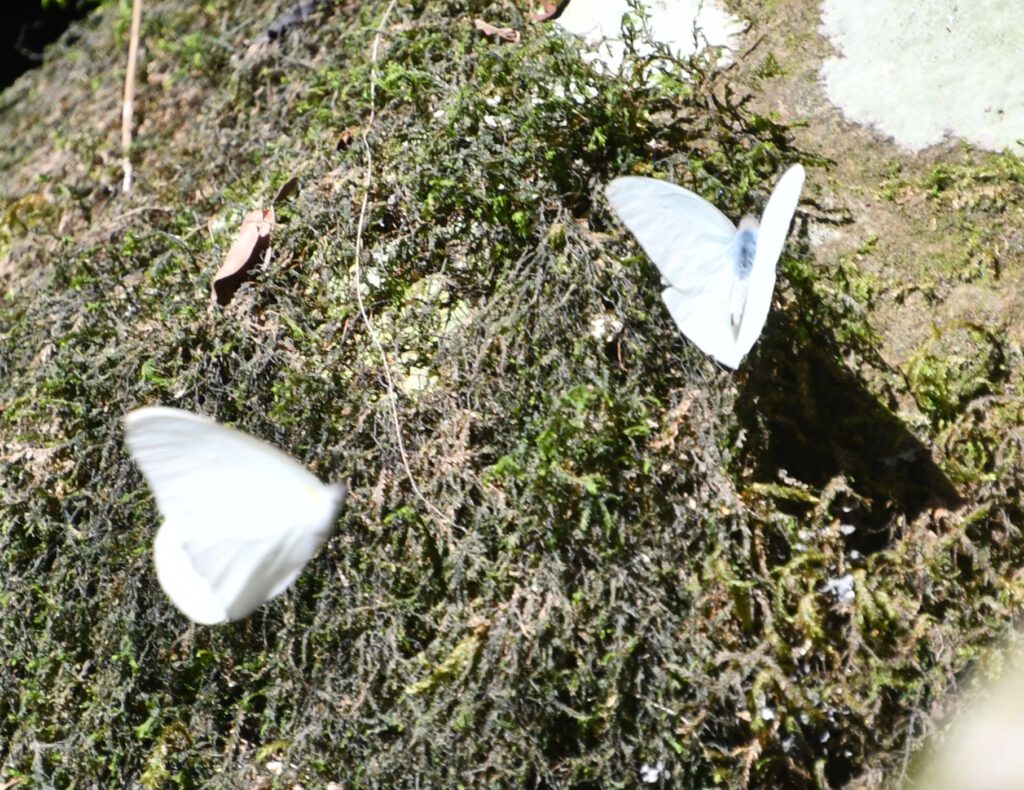
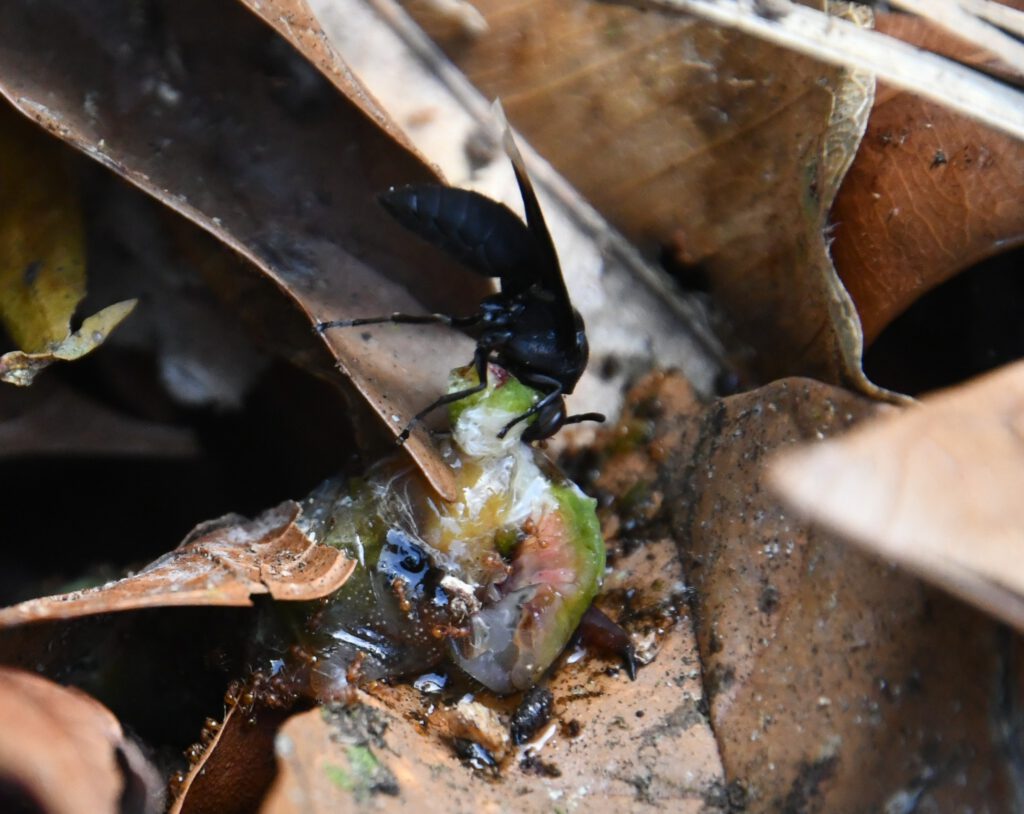
Paper wasps are builders, and their nests are unmistakable—open combs with downward-facing cells that hang like little umbrellas under eaves or branches. That’s actually where they get one of their nicknames: “umbrella wasps“.
They won’t come at you unprovoked. But if you get too close to the nest—or if they think you’re a threat—they won’t hesitate to defend it. And when they sting, you’ll know it. Their venom can be extremely painful, and in rare cases, even life-threatening to those with allergies.
But here’s the thing—despite their bad reputation, most wasps, including paper wasps, are actually allies in the ecosystem. They play a vital role in natural pest control, feeding on caterpillars and other insects that wreak havoc in gardens.
So yeah, they’ve got a sting. But they’ve also got a job. And in the balance of things, they’re more helpful than most people think.
This little hopper is part of the Short-horned Grasshopper family, Acrididae, and while it might not look like much, don’t be fooled. These herbivores come in all sizes, from barely 5 mm to a hefty 11 cm, and some of them rank among the most destructive pests in agriculture.
What they lack in subtlety, they make up for in power. Their oversized hind legs are built for launch, perfectly engineered for jumping.
The life story starts underground. A single female can lay up to 100 eggs in the soil. After a pause (a kind of rest period) the tiny nymphs hatch, looking like miniature adults. From there, it’s a series of molts as they grow into full-fledged jumpers. Depending on the region, you can see one to several new generations each year.
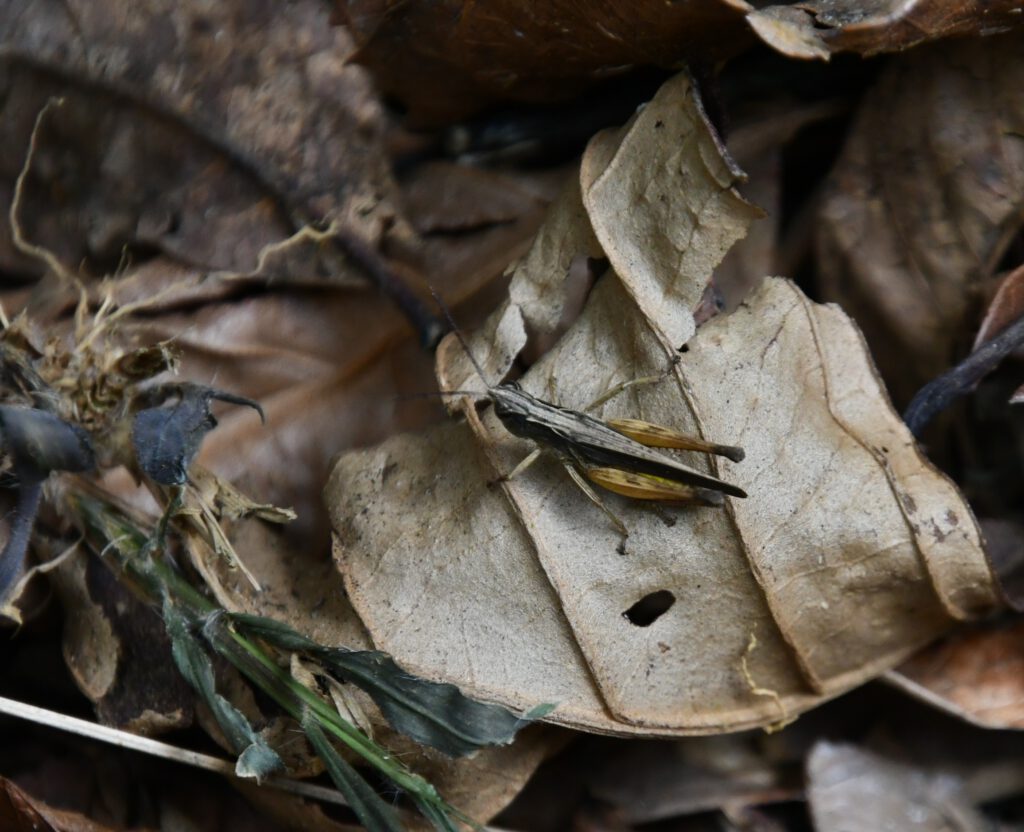
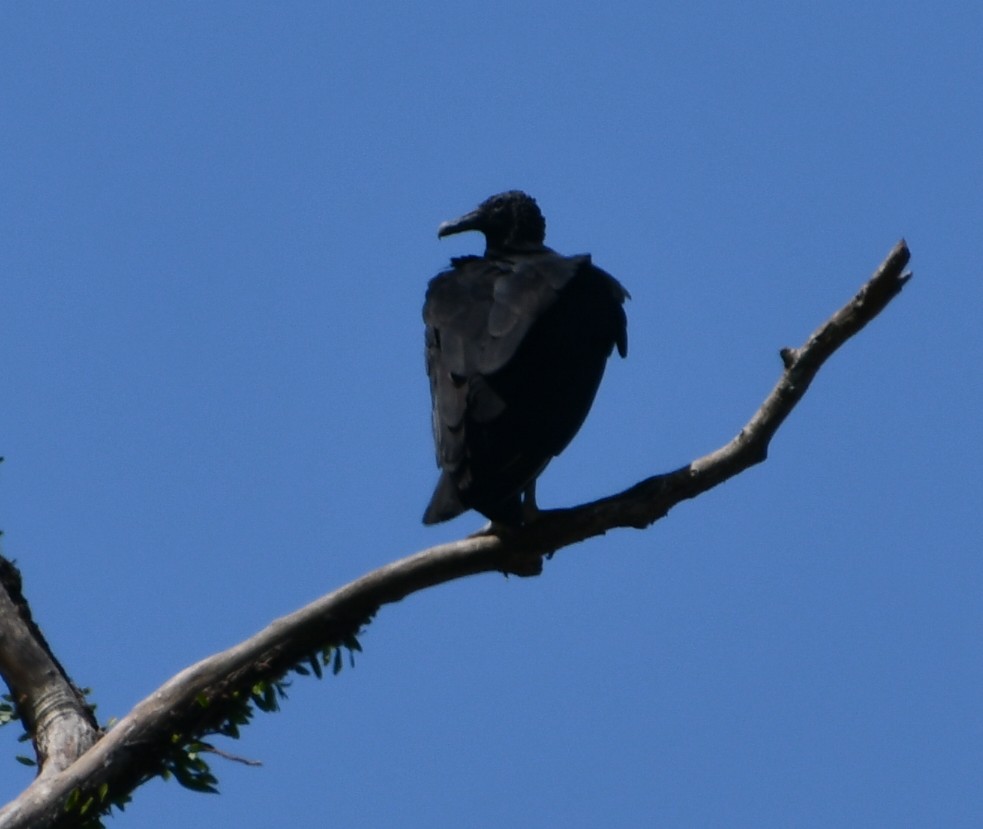
Black vultures prefer open areas with scattered trees—places like chaparral and parts of the Brazilian Pantanal—where spotting carcasses is easier. That’s their main food source, after all.
Despite their rough image, black vultures are protected under international agreements like the Migratory Bird Treaty Act. In the U.S., harming one without a permit can land you a $15,000 fine and up to six months in jail. Still, they’re listed as “Least Concern” by the IUCN, with stable populations.
Not everyone’s a fan. Their droppings can damage trees, and, when threatened, they vomit as a defense.
The Masked Water Tyrant (Fluvicola nengeta) is a small, eye-catching bird native to eastern and southeastern Brazil. Interestingly, a separate population has made its home along the Pacific coast of South America, in western Ecuador and northwestern Peru. Adaptable yet selective, this species thrives in subtropical and tropical habitats—particularly mangrove forests and moist shrublands—where its bold black-and-white plumage and lively behavior stand out against the greenery.
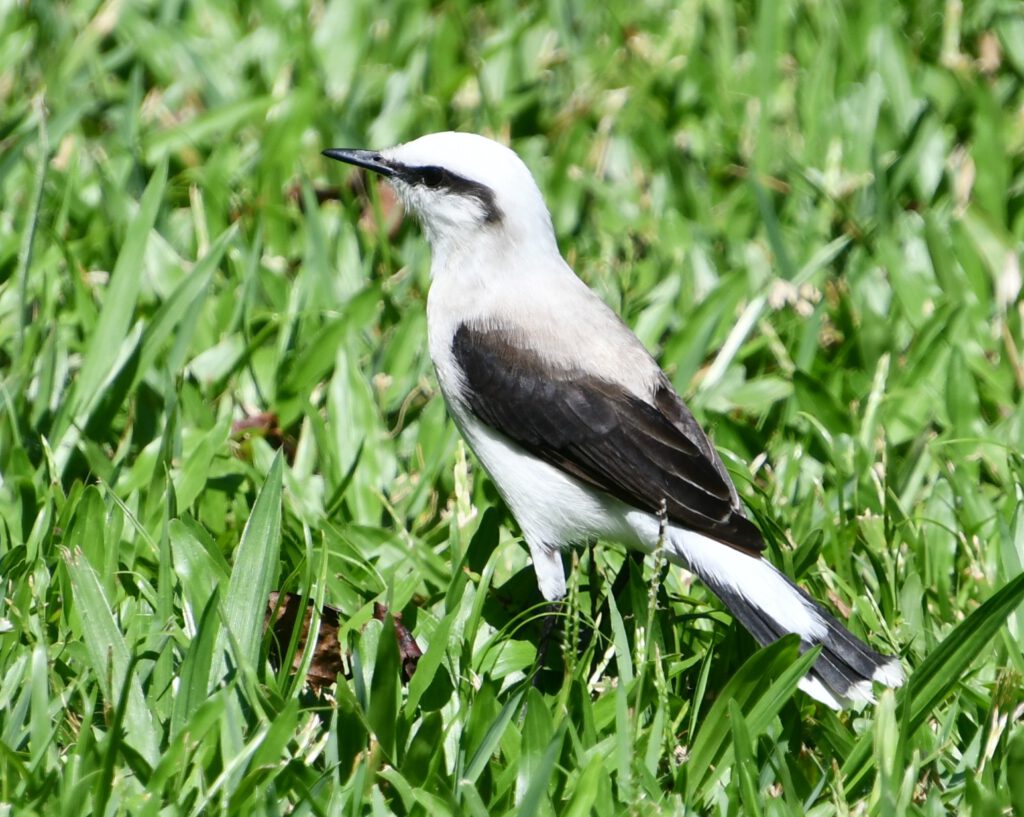
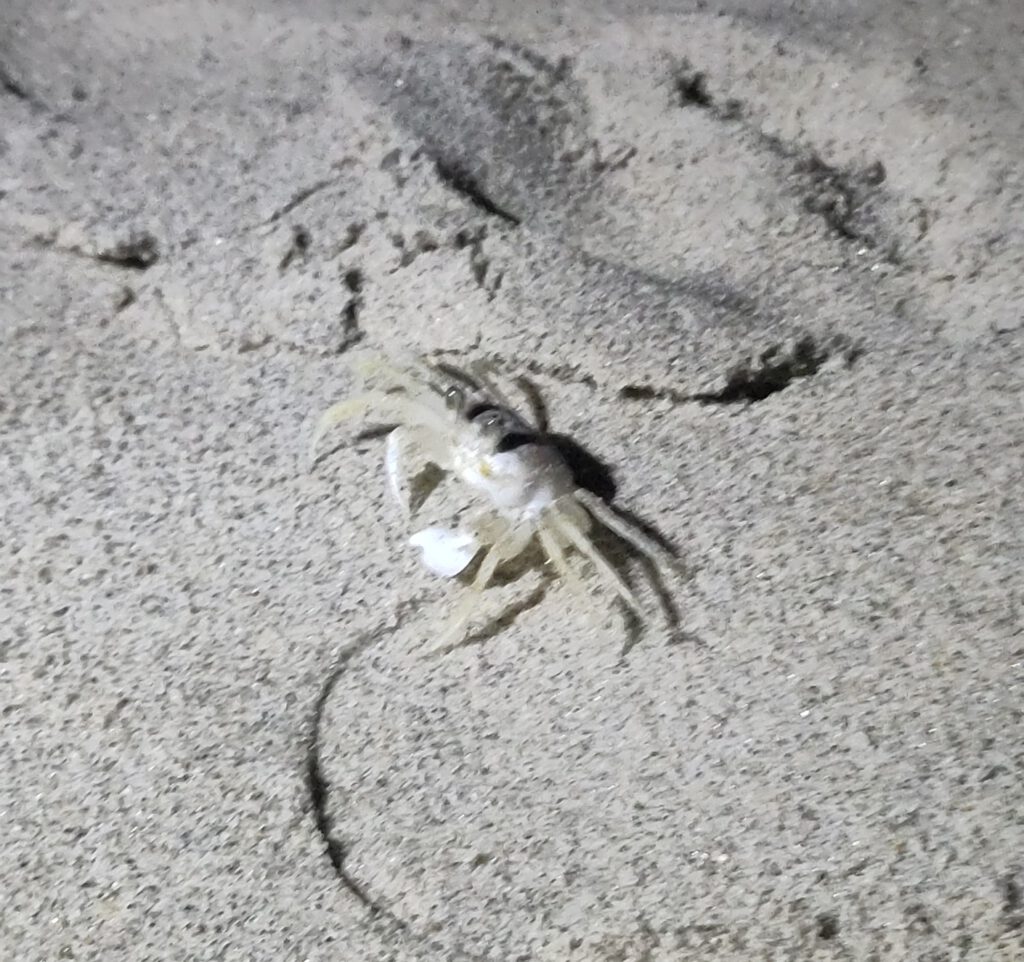
The Atlantic Ghost Crab (Ocypode quadrata) is a familiar sight along the Atlantic coasts of the Americas, stretching from the sandy beaches of Massachusetts all the way down to Barra do Chuí in southern Brazil. Unlike many crabs, they spend much of their lives on land, though they must return to the water now and then to moisten their gills and release their larvae into the sea.
Adults make their homes in sandy burrows dug just above the strandline—sometimes reaching as deep as 1.3 meters. These burrows can even be sealed shut with sand during the hottest hours of the day, offering a cool refuge. With swiveling compound eyes that grant nearly 360° vision, ghost crabs are always on alert.
Remarkably, a behavioral study using the famous mirror test suggests that Atlantic Ghost Crabs may be capable of recognizing themselves—a rare trait in the animal kingdom.
At the end, a heartfelt thank you to my dear friend for opening his home to us, sharing insider secrets, and guiding us through so many unique experiences, turning our trip into a truly unforgettable vacation.

